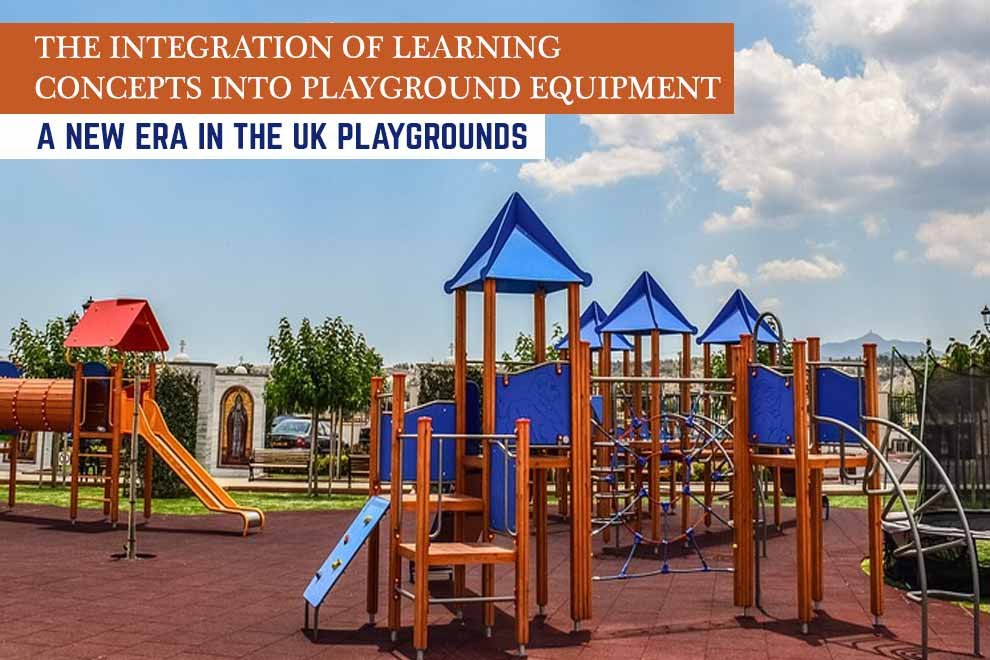Changing the Game in Playgrounds
In the ever-evolving world of education and child development, the way we think about play and learning environments for children has undergone a considerable transformation. The UK, in particular, has been trailblazing the path towards innovative school playground equipment[1] , spaces that intertwine fun with educational elements. This growing trend is revolutionising the traditional perception of playgrounds. Instead of merely being spaces where children release their pent-up energy, playgrounds are now being seen as active learning zones that foster physical development, cognitive growth, and a deep sense of curiosity and wonder.
These playgrounds employ creative equipment that is not only fun but also stimulating, as they embed educational concepts into their design and functionality. This move is not just enhancing the value of playtime but is also propelling the broader objective of holistic child development.
Why Integrate Learning Concepts into Playground Equipment?
There’s a growing body of research that shows a clear link between physical activity and cognitive development in children. Consequently, the idea of integrating learning concepts into playground equipment is gaining traction. Here are some of the key benefits that this unique blend of play and learning provides:
1. Cognitive development: Educational playgrounds can offer equipment that requires children to think, solve problems, and exercise their creativity. For instance, a simple game of hopscotch can teach children to identify and sequence numbers, whereas solving a maze can enhance their problem-solving abilities and spatial awareness.
2. Physical development: Playgrounds are naturally conducive to physical activity. However, with the inclusion of learning concepts, they can also help children to refine their gross motor skills, improve coordination, and develop agility and strength.
3. Social development: When playground equipment is designed to promote cooperative play, it can assist children in developing vital social skills. These include turn-taking, negotiation, and conflict resolution, all of which are necessary for effective social interaction.
4. Emotional development: Learning playgrounds can foster a host of emotional skills in children. These include patience (waiting for their turn on the slide), resilience (trying again after a failed attempt at climbing), and self-esteem (achieving a task or solving a problem).
Therefore, playgrounds that incorporate educational elements can serve as vital tools for the holistic development of children.
The Convergence of Education and Play: Innovative Examples from the UK
The UK has been pioneering in integrating learning concepts into playground design, paving the way for other nations. Here are some innovative examples that encapsulate this trend:
1. Sensory Playgrounds
Sensory playgrounds are becoming increasingly popular in the UK. These playgrounds provide children with an array of sensory experiences by integrating elements such as sand and water play stations, textured walking surfaces, and visually stimulating structures. They also use natural elements, such as scented plants and wind chimes, to engage a child’s senses. Such playgrounds are not only beneficial for all children, but they also provide invaluable stimuli for children with sensory processing disorders.
2. Playgrounds with Environmental Concepts
Amid growing concerns about environmental sustainability, the UK is seeing a rise in playgrounds that incorporate environmental learning concepts into their designs. Equipment such as rainwater harvesting systems, solar-powered features, and composting stations educate children about the importance of conservation, renewable energy, and recycling. These playgrounds often include garden patches where children can learn about plants and experience the satisfaction of seeing their efforts bear fruit, literally and metaphorically.
3. Interactive Technology Playgrounds
The UK is no stranger to the digital age, and this extends to its playgrounds too. Interactive screens and digital games are being integrated into playground equipment, creating a dynamic learning experience that is engaging and educational. These playgrounds offer a variety of learning experiences, from digital puzzles that enhance cognitive abilities to virtual reality games that take children on educational adventures.
4. Playgrounds with Mathematical Concepts
Maths is often a tricky subject for many children, but integrating mathematical concepts into play can make it fun and less intimidating. UK playgrounds are incorporating equipment like giant abacuses, number-based hopscotch grids, puzzles, and mazes to help children develop an intuitive understanding of numbers, patterns, and spatial relationships.
Adopting Innovative Playground Equipment: A Step-by-step Guide for UK Markets
Adopting these new concepts might seem challenging, but here’s a step-by-step guide to help:
1. Identify the Target Age Group: Playground designs and equipment should be age-appropriate. The learning concepts and challenges incorporated should align with the developmental stage of the target age group.
2. Choose the Learning Concepts: There is a wide array of learning concepts to choose from – environmental education, mathematical principles, sensory elements, and technological aspects. The selection should ideally be based on the community’s preferences and the desired learning outcomes for the children.
3. Select Suitable Equipment: The equipment must support the chosen learning concepts without compromising on safety or enjoyment. For instance, if the chosen concept is environmental education, the equipment could include a rainwater harvesting system or a mini-garden patch.
4. Collaborate with Playground Design Experts: Designing an educational playground requires expertise in both child development and playground safety standards. Professionals specialising in this area can provide guidance in creating a playground that is fun, safe, and educationally enriching.
5. Evaluate and Iterate: After the playground is installed, it’s essential to evaluate its effectiveness. Gather feedback from children and parents to understand whether the learning components are engaging and effective. Based on the feedback, adjustments can be made to enhance the learning experience.
Conclusion: The Future of Playgrounds in the UK
The UK’s innovative approach to integrating learning concepts into playground equipment is setting the stage for the future of play spaces. These playgrounds are blurring the lines between play and education, creating a symbiotic environment where both can coexist and complement each other. As more playgrounds embrace this transformation, children can look forward to a future where every trip to the playground is a fun-filled learning journey.










